
The Untamed Beauty of Superior National Forest
Discover the pristine wilderness and outdoor adventures of Superior National Forest in Minnesota, a sanctuary for nature lovers and adventure seekers.
Nestled in northeastern Minnesota, Superior National Forest spans over three million acres of unspoiled wilderness. Known for its dense forests, crystal-clear lakes, and diverse wildlife, it is a paradise for nature lovers and outdoor enthusiasts. Whether you are an avid hiker, a passionate angler, or just someone looking to escape the hustle and bustle of city life, this forest offers a serene and rejuvenating experience. The Superior National Forest is home to the Boundary Waters Canoe Area Wilderness (BWCAW), one of the most popular canoeing destinations in the country. Here, you can paddle through interconnected lakes and rivers, surrounded by breathtaking landscapes and the tranquility of nature. The BWCAW also offers excellent opportunities for fishing, with abundant populations of walleye, northern pike, and smallmouth bass. For those who prefer staying on land, the forest boasts an extensive network of hiking trails, including the Superior Hiking Trail, which offers stunning views of Lake Superior and the surrounding wilderness. The forest is also a haven for wildlife enthusiasts, with chances to spot black bears, wolves, moose, and a variety of bird species. In the winter, the forest transforms into a snowy wonderland, perfect for cross-country skiing, snowshoeing, and snowmobiling.
Local tips in Superior National Forest
- Secure permits in advance for the Boundary Waters Canoe Area Wilderness, especially during peak seasons.
- Pack insect repellent, as mosquitoes and black flies can be abundant during the summer months.
- Check weather conditions before your trip, as the weather can be unpredictable and change rapidly.
- Consider visiting in the fall to enjoy the stunning autumn foliage and fewer crowds.
- Bring a good map and compass or GPS, as cell phone reception can be unreliable in the forest.
The Untamed Beauty of Superior National Forest
Nestled in northeastern Minnesota, Superior National Forest spans over three million acres of unspoiled wilderness. Known for its dense forests, crystal-clear lakes, and diverse wildlife, it is a paradise for nature lovers and outdoor enthusiasts. Whether you are an avid hiker, a passionate angler, or just someone looking to escape the hustle and bustle of city life, this forest offers a serene and rejuvenating experience. The Superior National Forest is home to the Boundary Waters Canoe Area Wilderness (BWCAW), one of the most popular canoeing destinations in the country. Here, you can paddle through interconnected lakes and rivers, surrounded by breathtaking landscapes and the tranquility of nature. The BWCAW also offers excellent opportunities for fishing, with abundant populations of walleye, northern pike, and smallmouth bass. For those who prefer staying on land, the forest boasts an extensive network of hiking trails, including the Superior Hiking Trail, which offers stunning views of Lake Superior and the surrounding wilderness. The forest is also a haven for wildlife enthusiasts, with chances to spot black bears, wolves, moose, and a variety of bird species. In the winter, the forest transforms into a snowy wonderland, perfect for cross-country skiing, snowshoeing, and snowmobiling.
When is the best time to go to Superior National Forest?
Iconic landmarks you can’t miss
Father Baraga's Cross Historical Marker
Explore the rich historical significance of Father Baraga's Cross, a tribute to Minnesota's early Catholic missions amidst stunning natural beauty.
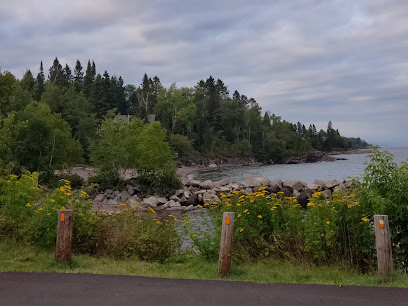
Finland State Forest
Discover the breathtaking landscapes and diverse wildlife of Finland State Forest, Minnesota's hidden treasure for nature lovers and adventure seekers.

Unmissable attractions to see
Split Rock Lighthouse
Discover the stunning Split Rock Lighthouse, a historic gem on Lake Superior's shores, offering breathtaking views and rich maritime heritage.

Great Lakes Aquarium
Experience the beauty of freshwater ecosystems at the Great Lakes Aquarium in Duluth, where adventure and education come together.

Aerial Lift Bridge
Explore the Aerial Lift Bridge in Duluth, Minnesota, a stunning engineering feat and iconic symbol offering breathtaking views of Lake Superior.

Enger Park
Discover the beauty of Enger Park in Duluth, Minnesota, with stunning gardens, scenic views, and the iconic Enger Tower offering breathtaking panoramas.

Leif Erikson Park
Discover the natural beauty and tranquility of Leif Erikson Park in Duluth, where stunning gardens meet the shores of Lake Superior.
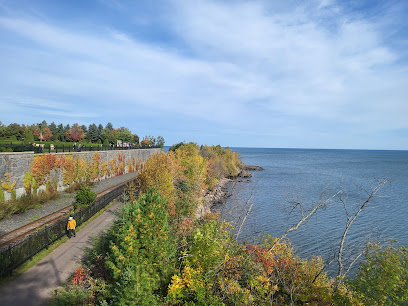
Grand Portage State Park
Explore the breathtaking landscapes and rich heritage of Grand Portage State Park, a must-visit destination for nature lovers and adventure seekers.

Temperance River State Park
Explore the stunning landscapes, hiking trails, and serene camping spots at Temperance River State Park along Minnesota's North Shore.

International Wolf Center
Explore the beauty of wolves at the International Wolf Center in Ely, MN – a unique wildlife refuge and conservation hub for all ages.

North American Bear Center
Experience the majesty of black bears at the North American Bear Center, a unique wildlife park and educational hub in Ely, Minnesota.

The Breakwater and Lighthouse
Discover the historic Breakwater and Lighthouse in Two Harbors, MN, where stunning views of Lake Superior meet maritime heritage.

Iona's Beach Scientific & Natural Area (SNA)
Experience the serene beauty of Iona's Beach Scientific & Natural Area, a perfect blend of nature, relaxation, and adventure along Lake Superior.

Hartley Nature Center
Discover the natural beauty and educational experiences at Hartley Nature Center in Duluth, MN, where nature and learning come together.

McQuade Small Craft Harbor
Discover McQuade Small Craft Harbor: A Scenic Haven on Lake Superior’s North Shore for Outdoor Enthusiasts and Nature Lovers.

Olcott Park
Experience the tranquility and natural beauty of Olcott Park, a perfect retreat for relaxation and outdoor adventures in Virginia, Minnesota.
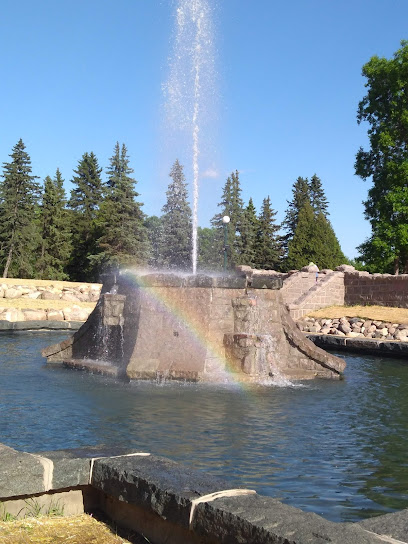
Bear Head Lake State Park
Explore the unspoiled beauty of Bear Head Lake State Park, a serene escape in Minnesota's wilderness perfect for outdoor adventures and relaxation.

Essential places to dine
Rustic Inn Cafe
Experience delightful breakfasts and homemade pies at Rustic Inn Cafe in Two Harbors, MN – a must-visit culinary destination on the North Shore.

Black Woods Bar & Grill
Discover Black Woods Bar & Grill: A delightful dining experience with local flavors in Two Harbors, MN.

New Scenic Café
Experience exquisite dining at New Scenic Café with locally sourced ingredients and stunning views of Lake Superior.

BoomTown Woodfire Bar & Grill | Eveleth, MN
Discover delicious grilled cuisine at BoomTown Woodfire Bar & Grill in Eveleth, MN - where flavor meets community spirit.

Sawmill Saloon & Restaurant
Experience the flavors of Minnesota at Sawmill Saloon & Restaurant with grilled delights and local charm.

Coho Cafe & Bakery
Experience delightful breakfasts and freshly baked treats at Coho Cafe & Bakery in Tofte – where culinary tradition meets local charm.

Northwoods Family Grille
Experience delicious American cuisine at Northwoods Family Grille in Silver Bay - home to mouth-watering burgers and BBQ delights.

Bluefin Grille
Discover Bluefin Grille: A premier dining destination on Minnesota's North Shore offering fresh local cuisine with stunning views of Lake Superior.

Ely Steak House
Experience exquisite steak dining at Ely Steak House in Minnesota – where every bite celebrates local flavors.

Britton's Café Inc.
Experience the heartwarming flavors of Ely at Britton's Café Inc., where every breakfast is crafted with care and served with a smile.

Papa Charlie's Tavern
Experience great food and live music at Papa Charlie's Tavern nestled in Minnesota’s stunning Lutsen Mountains.

Grand Superior Grill
Experience exquisite dining at Grand Superior Grill with breathtaking views of Lake Superior in Two Harbors, Minnesota.

Summit Chalet at Lutsen Mountains
Experience exquisite dining at Summit Chalet in Lutsen Mountains – where gourmet cuisine meets stunning natural beauty.

McQuade's Pub and Grill
Discover McQuade's Pub and Grill: A cozy haven in Two Harbors offering delicious food and warm Midwestern hospitality.

Trestle Inn Restaurant & Saloon
Discover Trestle Inn Restaurant & Saloon in Finland MN - where rustic charm meets delicious grilled cuisine in a cozy setting.

Markets, malls and hidden boutiques
Great! Lakes Candy Kitchen
Discover the sweetest experience in Knife River at Great Lakes Candy Kitchen, where handcrafted chocolates and nostalgic treats await every visitor.

Lake Superior Trading Post
Explore Lake Superior Trading Post: Your one-stop shop for gifts, outdoor gear, and local treasures in Grand Marais, Minnesota.

Burlington Station
Explore Burlington Station: Your go-to gift shop and cozy coffee retreat in Two Harbors, Minnesota, offering unique treasures and delicious treats.

Spirit of the Wilderness
Explore the great outdoors with top-notch gear and expert advice at Spirit of the Wilderness in Ely, Minnesota.

Sawtooth Outfitters
Explore the great outdoors with top-notch gear and rentals at Sawtooth Outfitters in Minnesota, your adventure starts here!

Northern Expressions
Savor the sweet flavors of homemade ice cream at Northern Expressions, Ely's favorite ice cream shop, surrounded by Minnesota's stunning natural beauty.

Tofte General Store
Explore Tofte General Store for all your grocery needs while enjoying the scenic beauty of Minnesota's North Shore.

Weldon's Gift Shop
Discover unique souvenirs and local crafts at Weldon's Gift Shop in Two Harbors, Minnesota, where every item tells a story.

Ubetcha Antiques & Uffda Gifts - Tower, MN
Explore Ubetcha Antiques & Uffda Gifts in Tower, MN, for unique antiques, souvenirs, and delightful gifts that embody local charm and history.

Fish Out of Water
Explore Fish Out of Water in Silver Bay for unique gifts and locally crafted treasures that embody the spirit of Minnesota's North Shore.

The Argyle Moose®
Explore The Argyle Moose® for unique gifts and local artisan products in Hugo, Minnesota - a delightful shopping experience awaits!

Northwoods Pioneer Gallery
Explore Northwoods Pioneer Gallery in Two Harbors for unique gifts and local artistry that embody the spirit of Minnesota's Northwoods.

Upstate MN
Explore Upstate MN, your go-to gift shop in Grand Marais for unique local crafts and treasures that capture the spirit of Minnesota.

Eagles Nest Gift
Explore Eagles Nest Gift in Silver Bay for charming souvenirs and local artisan treasures that celebrate the North Shore's unique culture.

Indigenous First Art & Gift Shop
Explore the vibrant Indigenous First Art & Gift Shop in Duluth, MN - a treasure trove of authentic Native American art and gifts.

Essential bars & hidden hideouts
Black Woods Bar & Grill
Experience the heart of Minnesota dining at Black Woods Bar & Grill, where delicious meals and a warm atmosphere await in Two Harbors.

BoomTown Woodfire Bar & Grill | Eveleth, MN
Experience the hearty flavors and warm hospitality at BoomTown Woodfire Bar & Grill, a culinary gem in Eveleth, MN.

Sawmill Saloon & Restaurant
Savor hearty meals in a rustic atmosphere at Sawmill Saloon & Restaurant, a must-visit grill in Virginia, MN.

Trestle Inn Restaurant & Saloon
Discover the rustic charm of Trestle Inn Restaurant & Saloon in Finland, MN, where delicious grilled dishes meet a warm, welcoming atmosphere.

Good Ol' Days Bar & Grill
Experience comfort food and local flavors at Good Ol' Days Bar & Grill, the heart of Tower, Minnesota's dining scene.
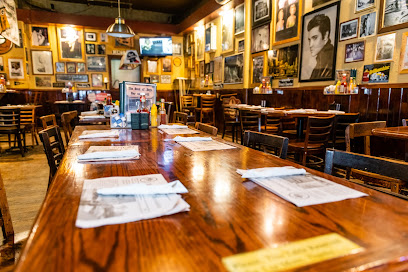
Moguls Grille & Taproom
Experience the perfect blend of hearty American cuisine and local craft beers at Moguls Grille & Taproom in Lutsen's stunning mountain landscape.

The Rink Sports Bar & Grill
Experience the perfect blend of delicious American cuisine and exhilarating sports at The Rink Sports Bar & Grill in Eveleth, Minnesota.

BG's Bar & Grill
Discover BG's Bar & Grill in Virginia, MN - a lively hub for delicious American cuisine and refreshing drinks in a welcoming atmosphere.

Tracks N Racks
Enjoy a delightful dining experience at Tracks N Racks in Beaver Bay, MN, where delicious grilled dishes meet a cozy atmosphere.

Fitz's Wandering Pines Eatery & Pub
Discover Fitz's Wandering Pines Eatery & Pub in Gilbert, MN—a perfect blend of local charm, delicious food, and a welcoming atmosphere.

South Switch
Experience the taste of Minnesota at South Switch, a delightful grill and restaurant offering delicious dishes in a cozy atmosphere.

Benchwarmer Grille
Discover the delectable delights of Benchwarmer Grille, a vibrant grill and bar in Tower, Minnesota, serving comfort food and sweet treats.

Rudy's Bar & Grill
Discover Rudy's Bar & Grill in Aurora, MN - a family-friendly spot for delicious meals, vibrant cocktails, and a great atmosphere.
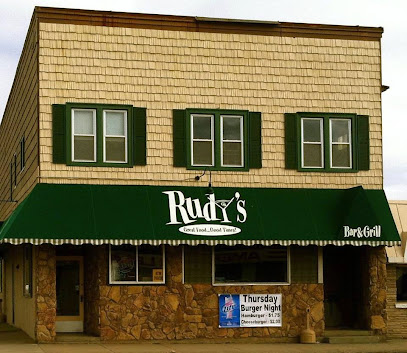
Green Door
Experience the best of Beaver Bay at Green Door, where craft beer and cozy vibes meet in a welcoming bar atmosphere.

Landing Sports Bar
Discover the lively atmosphere and friendly service at Landing Sports Bar in Two Harbors, where great food and drinks meet local charm.

Local Phrases about Superior National Forest
-
- HelloBoozhoo
[Boh-zhoo] - GoodbyeMiigwech
[Mee-gwetch] - YesEa
[Ay-ah] - NoAaniin
[Ah-nee-in] - Please/You're welcomeBoozhoo
[Boh-zhoo] - Thank youMiigwech
[Mee-gwetch] - Excuse me/SorryMiigwech
[Mee-gwetch] - How are you?Aaniin ezhi-giizhigad?
[Ah-nee-in eh-zhee-gee-zhee-gad?] - Fine. And you?Maamawi. Giin ezhi-giizhigad?
[Mah-mah-wee. Geen eh-zhee-gee-zhee-gad?] - Do you speak English?Gego wa'aw
[Geh-goh wah-ahw] - I don't understandAaniin ezhi-giizhigad?
[Ah-nee-in eh-zhee-gee-zhee-gad?]
- HelloBoozhoo
-
- I'd like to see the menu, pleaseGiga-waabamin menoo, miigwech
[Gee-gah-wah-bah-min meh-noh, mee-gwetch] - I don't eat meatGaawiin miijim
[Gah-wee-in mee-jeem] - Cheers!Boozhoo!
[Boh-zhoo!] - I would like to pay, pleaseGiga-waabamin dibishkoo, miigwech
[Gee-gah-wah-bah-min dee-bish-koo, mee-gwetch]
- I'd like to see the menu, pleaseGiga-waabamin menoo, miigwech
-
- Help!Aaniin!
[Ah-nee-in!] - Go away!Biboon!
[Bee-boon!] - Call the Police!Waabandaan mashi wiiyaashtanong
[Wah-bahn-dahn mah-shee wee-yah-sh-tah-nong] - Call a doctor!Waabandaan gaa-anaami'idiwin
[Wah-bahn-dahn gah-ah-nah-mee-ee-dee-win] - I'm lostNiin endaso
[Neen en-dah-soh] - I'm illNiin enji-gikendan
[Neen en-jee-gee-ken-dahn]
- Help!Aaniin!
-
- I'd like to buy...Giga-waabamin
[Gee-gah-wah-bah-min] - I'm just lookingNiizhwaaswi
[Nee-zhwah-swee] - How much is it?Zaagichigaazowin?
[Zah-gee-chee-gah-zoh-win?] - That's too expensiveMaajii wii-giiwenh
[Mah-jee wee-gee-wenh] - Can you lower the price?Gaawiin gashkitoon?
[Gah-wee-in gahsh-kee-toon?]
- I'd like to buy...Giga-waabamin
-
- What time is it?Aaniin giiji-ni'ishtam?
[Ah-nee-in gee-jee-nee-ish-tam?] - It's one o'clockBezhig giizhig
[Beh-zheeg gee-zheeg] - Half past (10)Niiwin dash
[Nee-win dash] - MorningBinaakwe
[Bee-nah-kweh] - AfternoonAabitoose
[Ah-bee-toh-say] - EveningZhigaag
[Zhee-gahg] - YesterdayGikendaasong
[Gee-ken-dah-song] - TodayBiindaakonig
[Bee-nah-dah-koh-nig] - TomorrowWaabanong
[Wah-bah-nong] - 1Ningoding
[Neen-goh-ding] - 2Ningozis
[Neen-goh-zis] - 3Niswi
[Nee-swee] - 4Niiwin
[Nee-win] - 5Naanan
[Nah-nahn] - 6Niizh
[Neezh] - 7Zhagag
[Zha-gahg] - 8Shawan
[Shah-wahn] - 9Niizhwaaswi
[Nee-zhwah-swee] - 10Midaaswi
[Mee-dah-swee]
- What time is it?Aaniin giiji-ni'ishtam?
-
- Where's a/the...?Aaniin endaa...
[Ah-nee-in en-dah...] - What's the address?Aaniin endaa a'aw?
[Ah-nee-in en-dah ah-ahw?] - Can you show me (on the map)?Gaawiin gashkitoon?
[Gah-wee-in gahsh-kee-toon?] - When's the next (bus)?Aaniin endaa...
[Ah-nee-in en-dah...] - A ticket (to ....)Ningoshimaagan
[Neen-goh-she-mah-gahn]
- Where's a/the...?Aaniin endaa...
History of Superior National Forest
-
Established in 1909, Superior National Forest was created by President Theodore Roosevelt to protect and preserve the region's natural resources. Covering over 3 million acres, it is one of the largest national forests in the United States, offering diverse ecosystems, from boreal forests to freshwater lakes.
-
Superior National Forest is rich in the heritage of the Ojibwe people, who have lived in the region for centuries. The forest was and continues to be a source of sustenance, spiritual significance, and cultural traditions for the Ojibwe. Sacred sites, such as ancient burial grounds and pictographs, can be found throughout the forest.
-
During the 18th and early 19th centuries, Superior National Forest played a crucial role in the fur trade. French-Canadian voyageurs and fur traders from the North West Company and Hudson's Bay Company traversed the region's waterways, establishing trading posts and routes that significantly impacted the local economy and indigenous communities.
-
In the 1930s, the Civilian Conservation Corps (CCC) established several camps within Superior National Forest as part of President Franklin D. Roosevelt's New Deal. The CCC workers built roads, bridges, and recreational facilities, many of which are still in use today, contributing significantly to the development and accessibility of the forest.
-
In 1978, the Boundary Waters Canoe Area Wilderness (BWCAW) Act was passed, designating over one million acres within Superior National Forest as protected wilderness. This act was a milestone in conservation history, ensuring the preservation of the area's pristine lakes, rivers, and forests for future generations to enjoy.
-
Superior National Forest has a long history of logging and mining activities. In the late 19th and early 20th centuries, the forest saw extensive logging operations, supplying timber to the growing nation. Mining for iron ore also took place in the region, contributing to the local economy. While these industries have declined, their historical impact is still evident in the forest's landscape.
-
Throughout the 20th century, Superior National Forest evolved into a premier destination for outdoor recreation. The development of campgrounds, hiking trails, and canoe routes has made it a popular spot for activities such as camping, fishing, and boating. The forest's natural beauty and diverse wildlife continue to attract visitors from around the world.
Superior National Forest Essentials
-
Superior National Forest is located in northeastern Minnesota. The nearest major airport is Minneapolis-St. Paul International Airport (MSP), approximately 250 miles away. From the airport, you can rent a car and drive to the forest, which takes around 4 to 5 hours. Alternatively, you can take a regional flight to Duluth International Airport (DLH), which is closer, and then rent a car for a shorter 2-hour drive to the forest.
-
Once you arrive, having a car is the most convenient way to explore Superior National Forest due to its vast size and remote locations. There are several car rental services available at both Minneapolis-St. Paul and Duluth airports. Within the forest, many trails and campsites can be accessed by car. For those who prefer not to drive, shuttle services are available for certain areas, and guided tours also offer transportation.
-
The official currency is the United States Dollar (USD). Credit cards are widely accepted at most establishments, including gas stations, restaurants, and hotels. However, it's advisable to carry some cash, especially when visiting more remote areas where card services may be unavailable. ATMs can be found in nearby towns such as Ely and Grand Marais.
-
Superior National Forest is generally a safe destination for tourists. However, standard precautions should always be taken. Be mindful of wildlife and follow park guidelines on food storage to avoid attracting animals. There are no specific high-crime areas targeting tourists, but it's always best to stay vigilant and aware of your surroundings. When hiking, always let someone know your plans and expected return time.
-
In case of emergency, dial 911 for immediate assistance. Cell phone coverage can be spotty in some areas of the forest, so it's a good idea to have a map and compass. Local ranger stations are equipped to handle various emergencies, including medical issues. It's recommended to carry a first-aid kit and know basic first aid. Travel insurance that covers medical emergencies is also advisable.
-
Fashion: Do wear weather-appropriate and layered clothing. The weather can change rapidly, so be prepared for rain and cold temperatures even in summer. Don't wear open-toed shoes when hiking. Religion: Do respect local Native American heritage sites. Don't disturb cultural artifacts. Public Transport: Do use shuttle services where available. Don't rely solely on public transport as it is limited. Greetings: Do greet fellow hikers and locals with a friendly nod or hello. Eating & Drinking: Do try local eateries in nearby towns. Don't leave trash behind; practice Leave No Trace principles.
-
To experience Superior National Forest like a local, visit the Boundary Waters Canoe Area Wilderness (BWCAW) for a unique paddling experience. Engage with local outfitters for guided trips and equipment rentals. Fishing is a popular activity, so consider getting a fishing license and trying your hand at catching walleye or northern pike. Lastly, don't miss the opportunity to stargaze in this designated Dark Sky area, free from urban light pollution.
Nearby Cities to Superior National Forest
-
Things To Do in Grand Marais
-
Things To Do in Duluth
-
Things To Do in Saint Cloud
-
Things To Do in Eau Claire
-
Things To Do in Saint Paul
-
Things To Do in Minneapolis
-
Things To Do in Marquette
-
Things To Do in Wausau
-
Things To Do in Fargo
-
Things To Do in Winona
-
Things To Do in Grand Forks
-
Things To Do in Wahpeton
-
Things To Do in La Crosse
-
Things To Do in Mankato
-
Things To Do in Green Bay












